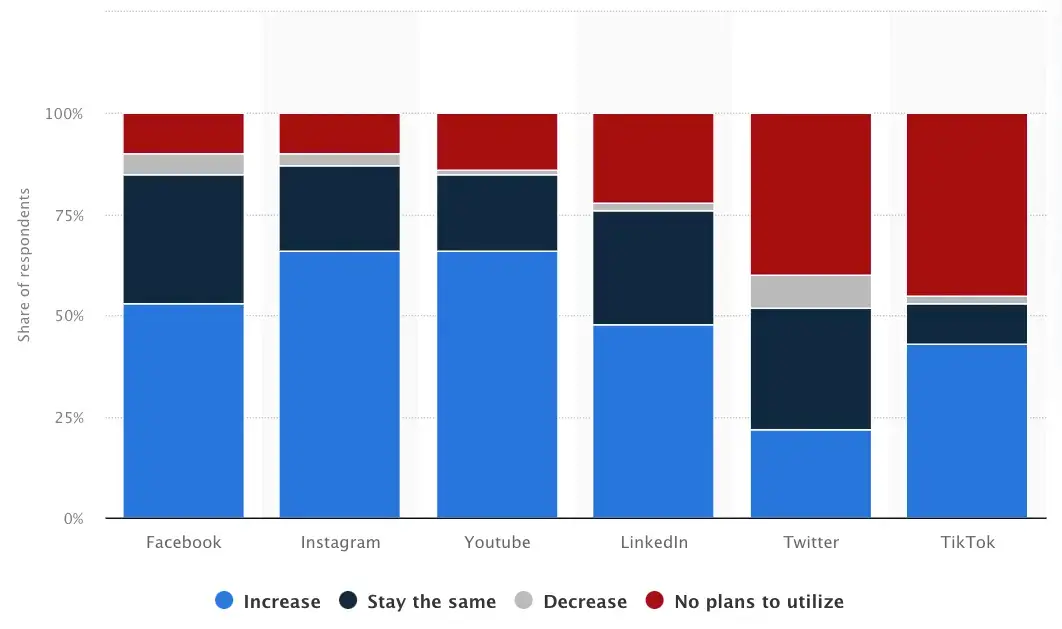Scarcity marketing is nothing new, but the big question is, does it actually work?
"We only have two units left, so it may be gone if you don’t buy now!” How often have you seen or heard a variation of that statement?
You may have heard it from a salesperson, or it may have come in an email or a pop-up when browsing the internet.
It’s a digital marketing tactic that isn't rooted in the digital age at all. In fact, it even predates traditional media like TV and newspapers, and has likely been around for a millennium.
Does scarcity marketing create a sense of urgency in potential customers, or do they see it as another digital marketing gimmick? Let's discuss.
What is Scarcity Marketing?
Scarcity marketing involves conveying to potential customers that they may miss out on a great deal if they don’t buy now.
FOMO (fear of missing out) can be a strong persuader for selling products.

Organizations know that creating a sense of urgency can persuade customers to purchase when they might otherwise wait.
Of course, that FOMO may be well-founded and grounded in reality.
There may be only X units of a product left, or only that many units may be available at the listed price, and when stock replenishment occurs, the price point may be higher than it is now.
The idea of scarcity marketing is to act as a catalyst for instant purchasing decisions.
If it’s not a tactic that you have previously employed, there are two big questions you will likely be asking. The first is whether scarcity marketing works.
The second is: if it does work, how should you use it to boost your marketing conversion and sales rates?
How to Use Scarcity Marketing
If you think about it, the answer to that first question is a fairly obvious yes. There have likely been many occasions where you have made a decision based on scarcity marketing.
It may even have been as simple as a limited number of tickets left for your favorite band–it doesn’t have to be as complex as Gradient Boosting vs. Random Forest.
So the big question is how to use it as a tactic to get better results.

Types of Scarcity Marketing
- Limited stock
- Early discounts
- Exclusive deals and partnerships
- Limited editions
- Seasonal offerings
- Countdown timers
- High demand
The first thing to consider is what type (or types) of scarcity marketing you will employ and when.
Although the end goal - instilling that sense of urgency and FOMO - may be the same, you can take several different routes to achieve that goal.
Limited stock
The most well-known form of scarcity marketing involves informing customers that your inventory is running low.
Combining low stock levels with the suggestion that any new inventory may be at a higher price often spurs customers into action and ensures they make a favorable purchasing decision.
Early discounts
Early discounts (or early access) can be an excellent way for retailers to stimulate interest in new products.
People are more likely to purchase a new product or service when a discount is applied.
You can also use this form to offer something ‘extra’ to loyal or VIP customers who place a high value on you.
Exclusive deals and partnerships
Another good way to use scarcity marketing is to offer exclusive deals or pair-ups that encourage people to buy or sign up.
For example, consider an impulse purchase of a new TV when paired with a renowned surround sound system brand.
If you specialize in neural networks and convolutional layer operations, team up with another tech specialist.
Limited editions
By offering a product or service available only for a limited period, you are often going beyond creating urgency and appealing to a customer’s sense of vanity.
It could take the form of ‘branding’ a product with a well-known celebrity or, in the F&B sector, creating a new product that is very much time-limited.
Seasonal offerings
Of course, seasonal products are limited in availability, but many are also available year-round.
However, consider offering something different that stands out from the crowd and is only available for a limited period.

Countdown timers
A countdown timer on landing pages can significantly amplify FOMO and drive purchases.
It can be especially effective during sales periods, as it lets customers know how long a product is available at a discounted price.
High demand
When you tell customers that a product or service is in high demand and may soon run out, you create the urgency they need to decide.
A good example is on travel websites, where pop-ups tell you how many rooms are left in a hotel and how many people are looking at it, thanks to being connected to a hotel channel manager. You should use this tactic only when demand is high.
Identify Where and When You Can Use Scarcity Marketing

It’s not just a case of thinking that scarcity marketing is a good way of boosting your sales and conversions; it’s a tactic you must use wisely and at the right time.
For example, you may sell hardware agents can use in a cloud contact center.
Your inventory of a specific headset model may be running low, and you could use scarcity marketing to shift the last of your current batch.
However, mixing and matching the types of scarcity marketing you employ can avoid potential fatigue in your customer base.
The other thing to think about is where you will use scarcity marketing. The most obvious answer is on your website and product landing pages.
After all, that’s where customers are most often browsing your products, and they’re already in your conversion funnel.
In this modern era, you engage with your customers across various platforms. While you want to capture customers on your website, you also want to capture customers who may see posts on your social media platforms.
Posting your scarcity marketing offers can be a great way to boost followers on Instagram and other social media platforms.
You can also use scarcity marketing as part of your email marketing and lead generation strategy. It’s again the case of considering where your customers will see offers.
Not all of them will visit your website regularly or even see your social media posts, so you must think about how to communicate with them.
Scarcity Marketing Mistakes to Avoid

Scarcity marketing can be a great tactic in many situations.
Still, it can also be easy to become blinded by the pursuit of better sales and conversions and to make mistakes that may damage your brand’s reputation.
Overuse
If customers see you constantly post that a specific product has limited stock, they may suspect you are either deceiving them or have poor inventory management skills.
Too many products
If you apply scarcity marketing to fewer products, customers will become suspicious. While a handy tactic, you should use it sparingly and only when your marketing teams identify it as optimal.
Exclusive should be exclusive
If you offer fewer exclusive deals, especially when they are limited to groups such as loyalty club members, you will exclude other parts of your customer base. It could lead to a decrease in customer retention rates and brand loyalty.
Failure to cope
Ok, you want to boost sales and conversions, but are you ready to handle any increase in demand from scarcity marketing? You also need to be sure you have the actual stock and that, if you run out, you immediately close any marketing for that product.
Extending limited-time offers
When customers see that a product is only available for a specific time, it can be an irritation. While launching a new, slightly different offer the following week may be acceptable, extending your current offer may make customers look elsewhere.
Takeaways
There is no doubt that when used correctly, scarcity marketing works and can boost your sales and conversions.
Every ecommerce business wants to grow and have great sales figures, and scarcity marketing is one tactic that can contribute to that goal.
By identifying which types to use and when and where to use them, you can employ them to their full potential.
However, be very aware of the caveats listed. Overuse or misuse can lead customers to grow tired of it as a tactic and even seek products and services elsewhere.
If you’re not already employing scarcity marketing, maybe it’s time your marketing teams considered it. Done right, it can be highly effective.


